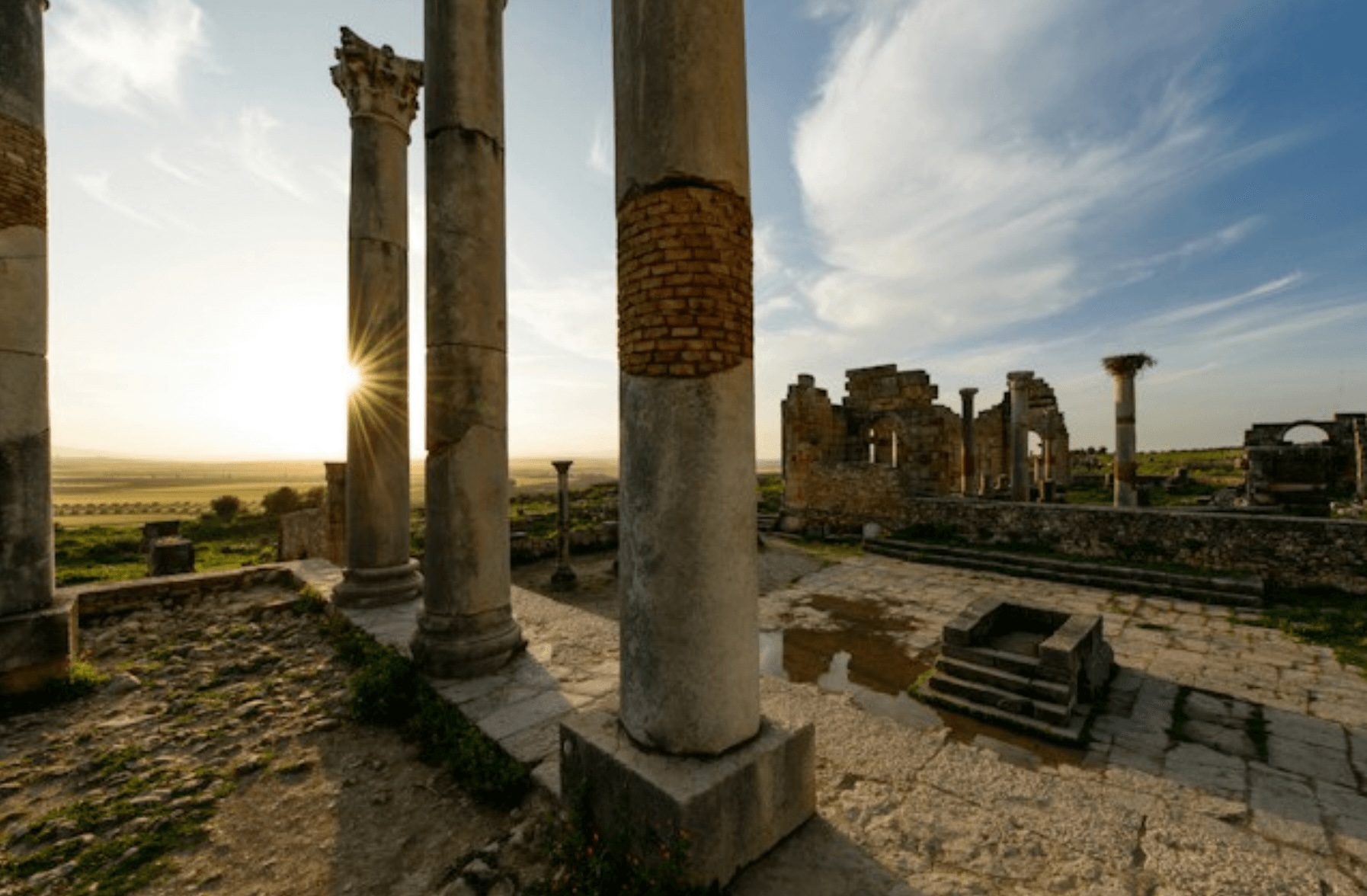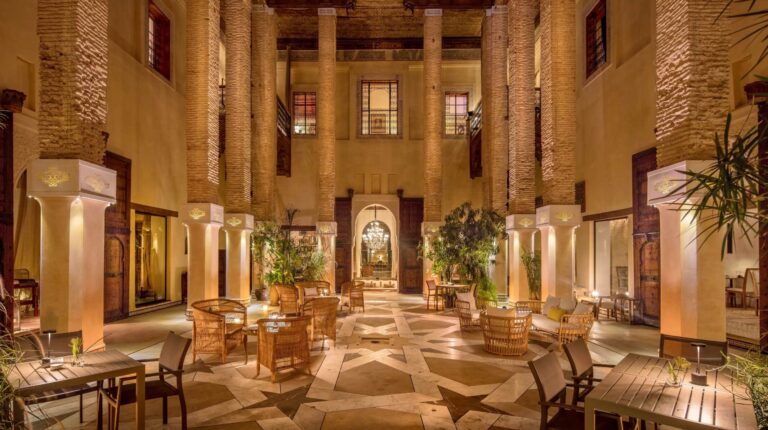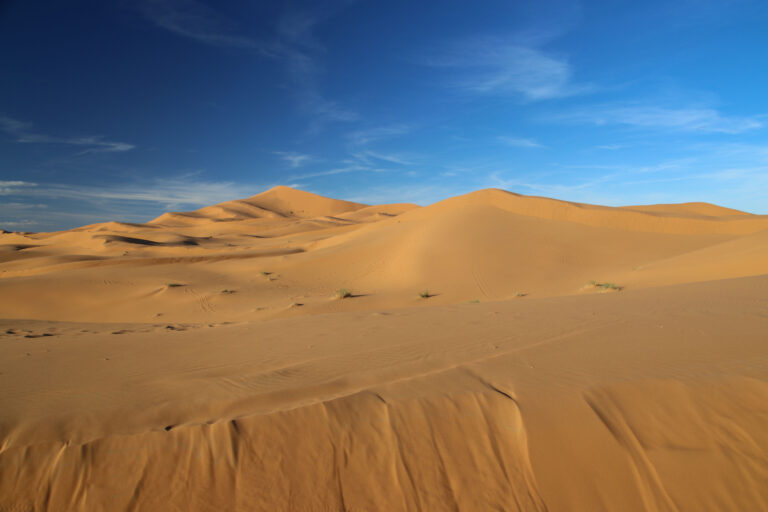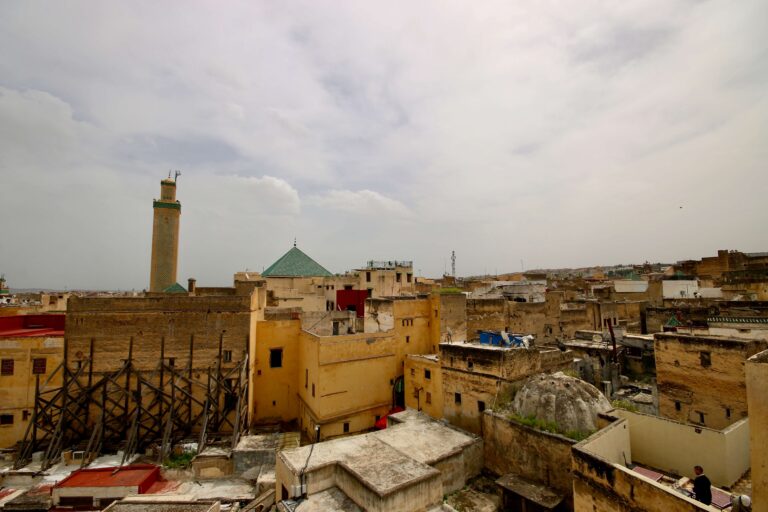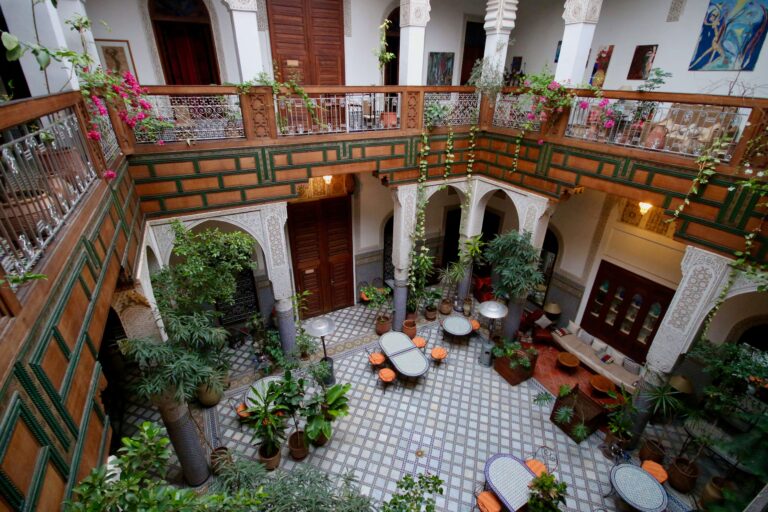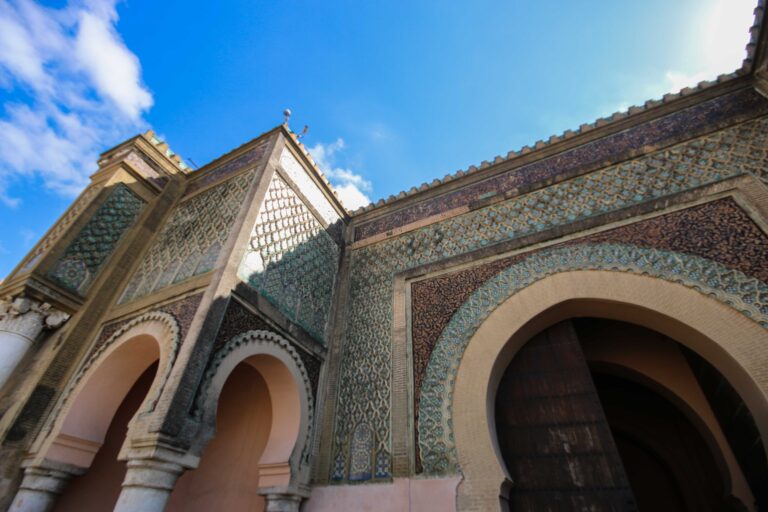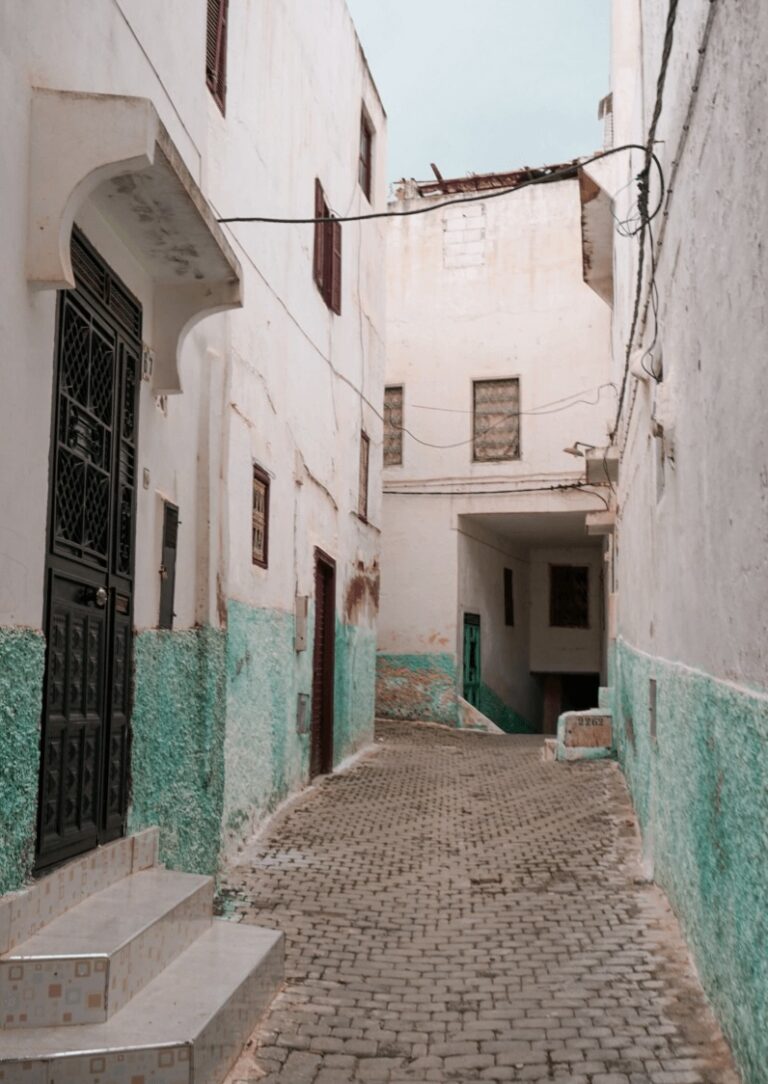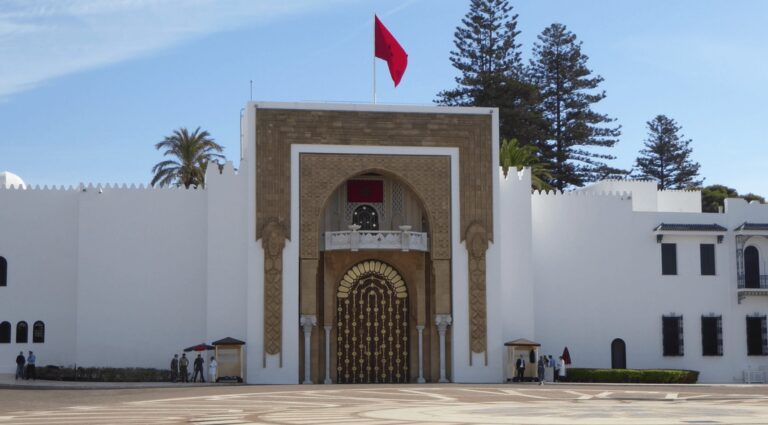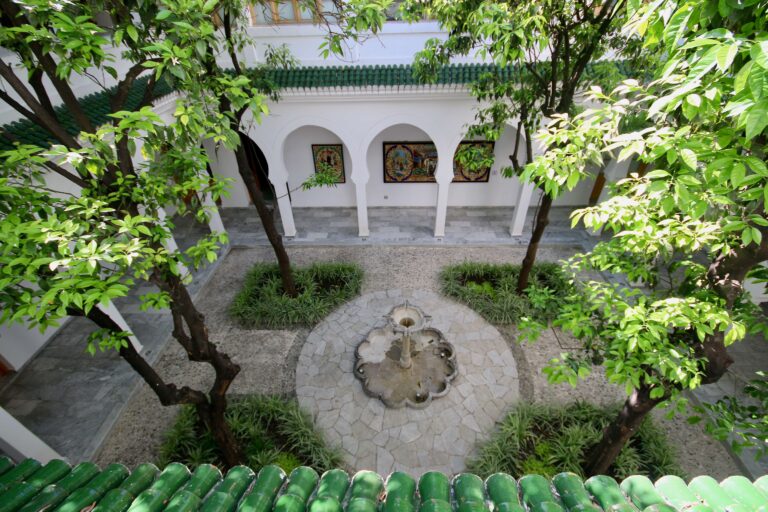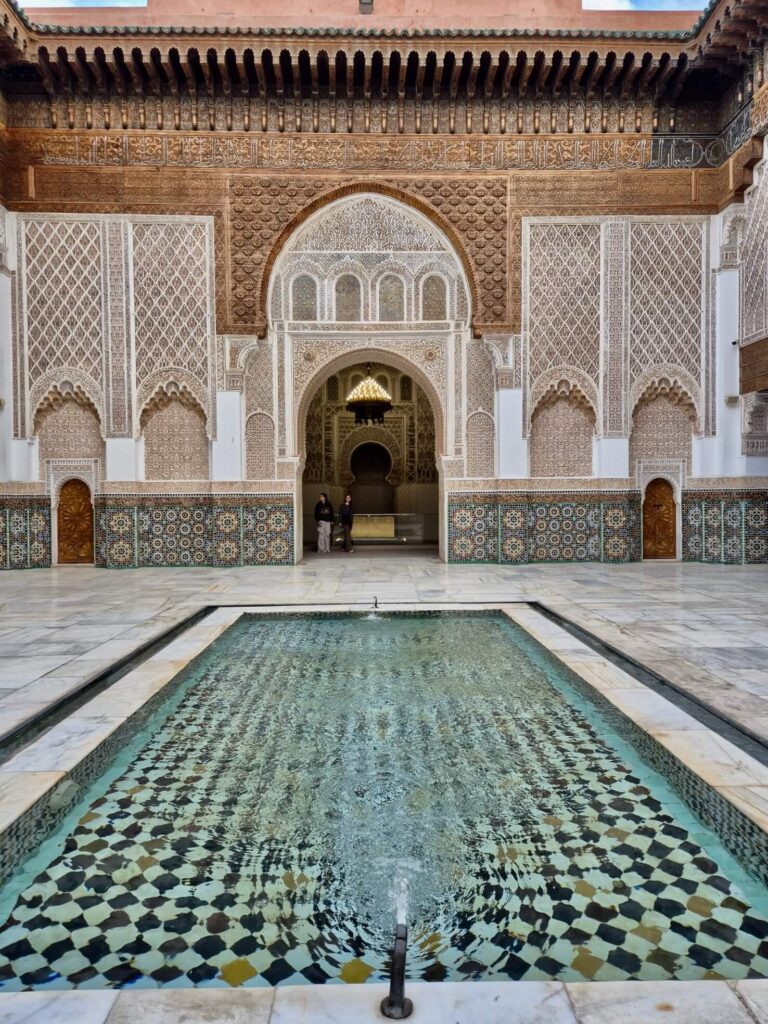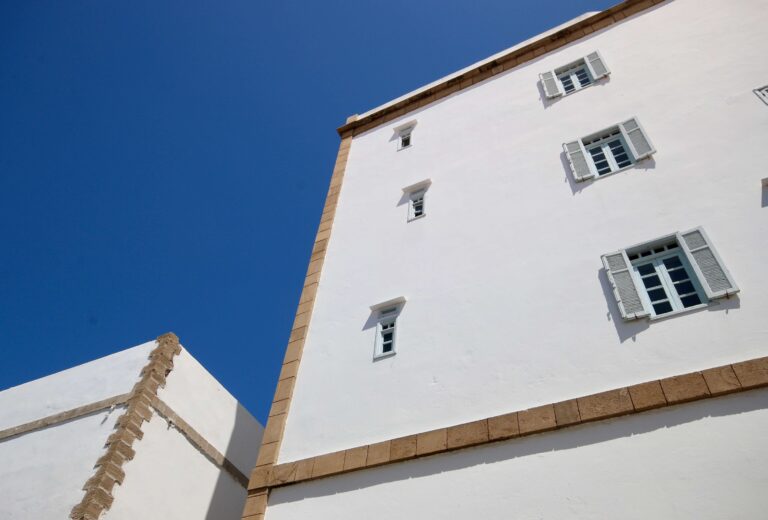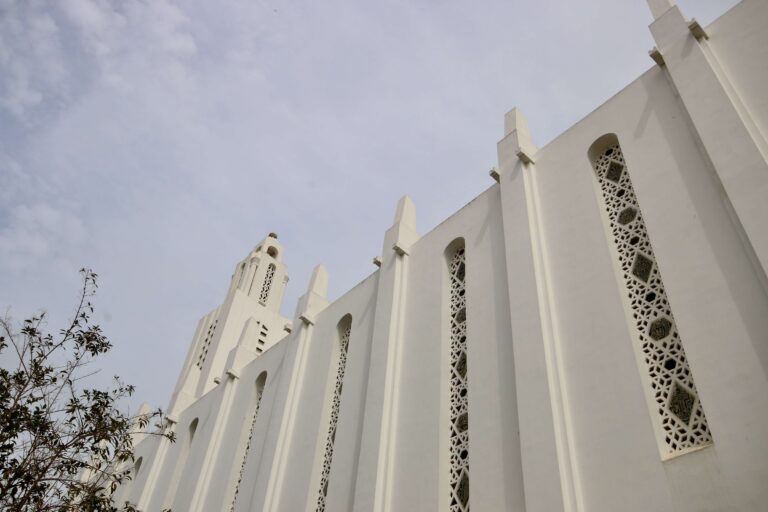Visiting the ancient Roman ruins of Volubilis in Morocco
Wondering how to visit Volubilis or what there is to see at this collection of ancient Roman ruins? In this article, I’ll answer all of your questions about exploring one of Morocco’s most impressive UNESCO World Heritage sites.
Perched on the southwestern edge of the Roman Empire’s territory, the ruins of Volubilis offer a fascinating insight into Morocco’s ancient past. The remains of this Amazigh-Roman city lie on a fertile plain near the city of Meknes, surrounded by rolling hills and rugged mountains.
With its UNESCO World Heritage status and easy accessibility from nearby Fes, Volubilis is a must-visit destination for anyone interested in history.
Once the capital of the Kingdom of Mauretania, this remarkably well-preserved archaeological site is renowned for its stunning mosaics. Depicting scenes from mythology, daily life and the natural world, they are testament to the artistry of Volubilis’ ancient craftsmen.
If you’re wondering is Volubilis worth visiting, I would respond with a resounding “Yes!”. Whether you’re intrigued by ancient civilisations or simply love photography, this magnificent Roman archaeological site is sure to impress.
In this guide to visiting Volubilis, discover everything you need to know about exploring the archaeological site. I’ll detail everything from getting there to highlights and the best time to visit.
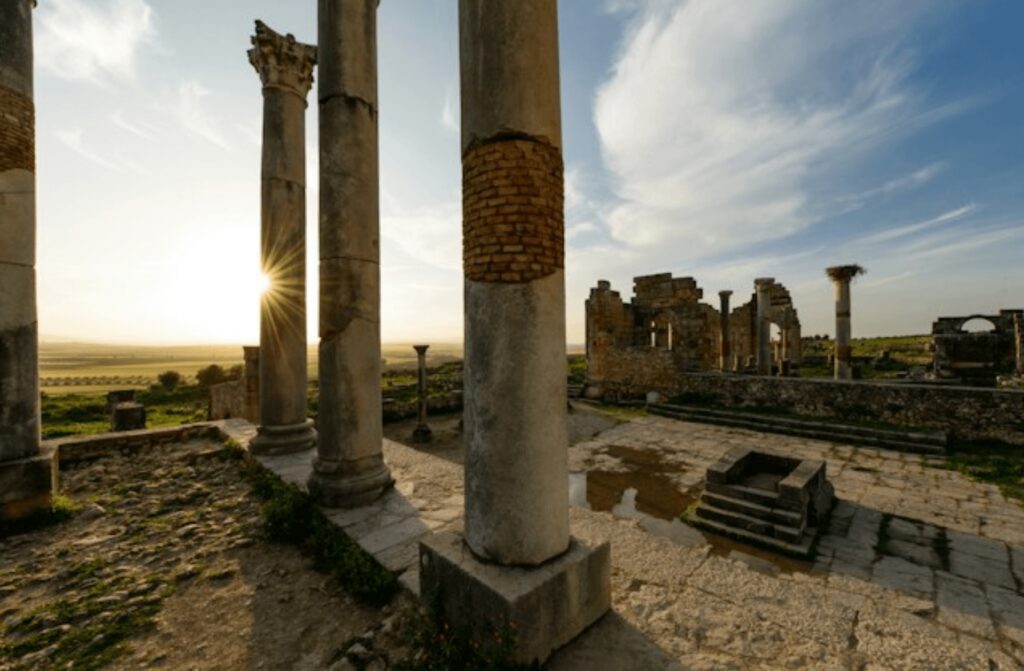
Disclosure: This article contains affiliate links, meaning I earn a small commission when you make a purchase. Affiliate links cost you nothing and ensure my content stays free!
BEST TOURS TO VOLUBILIS
Don’t have time to read the whole article? These are my top Volubilis tour recommendations:
A brief history of Volubilis in Morocco
The ancient city of Volubilis had a rich and storied history spanning over a millennium. Originating as an Amazigh settlement in the 3rd century BC, it came under the influence of the proto-Carthaginians.
Later, it served as the capital of the Kingdom of Mauretania. Named after the Moors, this ancient territory once encompassed parts of modern-day Morocco and Algeria.
Under Roman rule from the 1st century AD onward, Volubilis experienced a period of rapid growth and expansion. At one point in time, it encompassed an area of around 42 hectares (100 acres) enclosed within defensive walls.
The city’s prosperity during this Roman era was fuelled largely by its thriving olive cultivation. This enabled the construction of grand public buildings and the development of opulent houses featuring elaborately decorated mosaic floors.
However, Volubilis’ remote location on the southwestern edge of the Roman Empire ultimately proved its downfall. It fell to local tribal forces around 285 AD and was never reclaimed. Though no longer under Roman control, Volubilis continued to be inhabited for centuries.
After transitioning into a Latinised Christian community, it then became an early Islamic settlement.
In the late 8th century, Volubilis rose once again in prominence as the seat of power for Idris ibn Abdallah. He was a powerful Hasanid and founder of Morocco’s Idrisid dynasty.
By the 11th century, the ancient city had been largely abandoned and the centre of power shifted east to Fes. Much of the population was resettled in the nearby town of Moulay Idriss.
For centuries, the ruins of Volubilis remained largely intact, weathering the passage of time with remarkable resilience. In the mid-18th century, a devastating earthquake struck the region, causing catastrophic damage to many structures.
In the aftermath, Moroccan rulers used the site as a source of building materials for the construction of Meknes. This led to further destruction of the site.
It was not until the latter part of the 19th century that Volubilis’ significance was officially recognised, with the site being identified as the remains of an ancient Roman city. This marked the beginning of a renewed interest in preserving and studying its archaeological treasures.
During these years, a concerted effort was made to excavate the site, with nearly half of the area being uncovered and explored. This painstaking work revealed well-preserved mosaics, as well as the remnants of many prominent public buildings and high-status residential structures.
Some of the most significant structures were carefully restored or reconstructed. Today, this allows visitors to glimpse the grandeur of Volubilis in its prime.
Today, Volubilis stands as a UNESCO World Heritage Site. It is recognised for providing a window into the Roman colonial experience on the fringes of the empire.
The site’s well-preserved ruins and beautiful mosaics offer a captivating experience for those interested in Morocco’s ancient history.
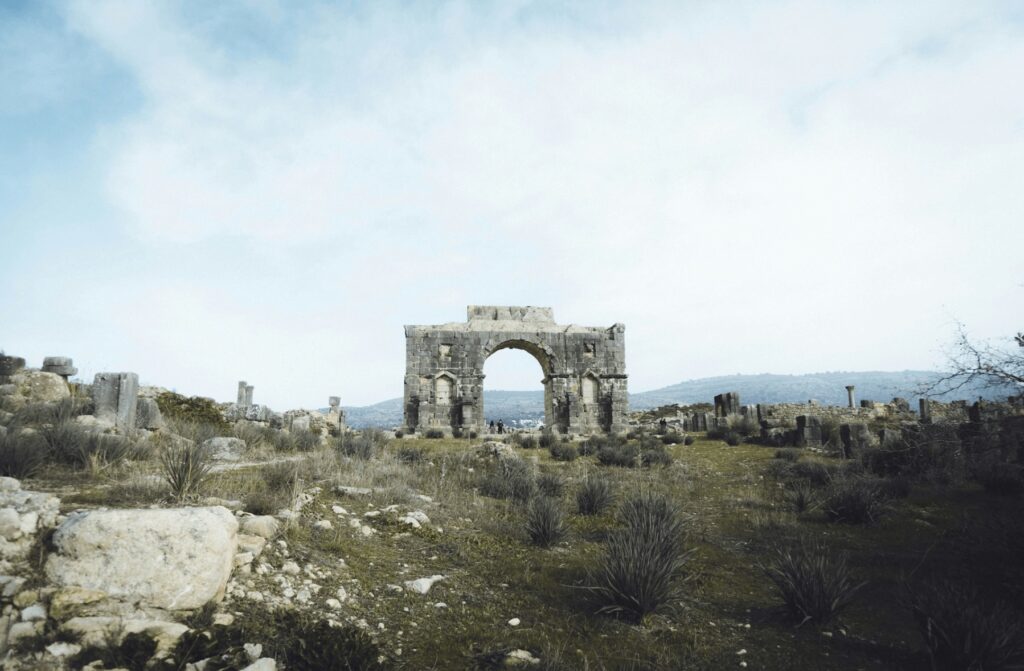
How to get to Volubilis
On foot from Moulay Idriss
From the holy town of Moulay Idriss, it’s a one-hour walk (four kilometres) to the archaeological site of Volubilis. Signposts indicate the way and the route takes you along a peaceful country road surrounded by rolling fields.
By share taxi from Meknes and Moulay Idriss
Volubilis is around 30 kilometres from the imperial city of Meknes, which is a fascinating destination in itself. Share taxis are available from Meknes to Moulay Idriss. From here, you can get another share taxi to Volubilis.
Keep in mind that share taxis depart once full, so you may have to wait a while, depending on demand. This is one of the cheapest ways to reach Volubilis.
By private taxi from Meknes or Fes
The quickest way to reach Volubilis is with a private transfer from Meknes or Fes. This can also include a stop in Moulay Idriss. From Fes, it’s around 80 kilometres or a 1.5 hour drive. Negotiate with the driver how long you would like to spend at the ancient site and they will quote accordingly.
Self-driving
If you’re on a self-driving tour of Morocco, you can easily reach Volubilis from Meknes or Fes. I recommend you rent a car in Morocco through Discover Cars, which offers free cancellation and 24/7 support. They have everything from compact automatics to manual vans, ensuring there’s something for all travel groups and driving styles.
On a guided tour
Many people opt to visit Volubilis on a guided tour, either from Fes or Meknes. In my opinion, this is the most convenient and hassle-free way to experience the site. The tours are led by knowledgeable guides, who will explain the history of Volubilis and its significance to Moroccans today.
This small-group guided tour from Fes to Volubilis includes stops in Meknes and Moulay Idriss, allowing you to cover a lot of ground. Although more expensive, this private tour from Fes to Volubilis is a great option if you want an exclusive experience.
Exploring the ruins of Volubilis: What is there to see?
Approximately half of Volubilis has been excavated so far and the impressive ruins offer a fascinating glimpse into the city’s storied past. Among the most prominent public buildings are a grand basilica and a magnificent triumphal arch. Both have been carefully reconstructed to showcase their original grandeur.
Beyond these iconic monuments, a wealth of private residences belonging to the city’s elite have also been unearthed. Several of these opulent mansions are particularly noteworthy for their mosaic floors.
Most of the site’s buildings were constructed using a distinctive grey-blue limestone that was quarried locally. This gives the ruins a cohesive aesthetic. Regrettably, very little physical evidence remains of the earlier Carthaginian settlement. These structures were largely destroyed by the subsequent Roman constructions.
Visiting the ancient Roman site of Volubilis
To visit Volubilis, you need pay a small admission fee on arrival. Official guides are also available (for an additional charge) at the entrance.
Just beyond the entrance gate, there is a small museum housing some of the most celebrated finds from the site. These include bronze artefacts that showcase the skilled craftsmanship of the area’s ancient inhabitants.
Many of the most prized discoveries, however, are now housed in the Museum of History and Civilisations in Rabat. This is definitely worth a visit if you’re travelling to the capital!
Scattered throughout the site are information boards with detailed explanations in English, French and Arabic. These not only explain their significance but help to bring the ruins to life.
If you’re not already visiting Volubilis on a guided tour, hiring an official guide can provide invaluable insights. They will also help to interpret what you are seeing.
In my opinion, you should allow at least two hours to cover the highlights. Although you could easily spend a lot longer.
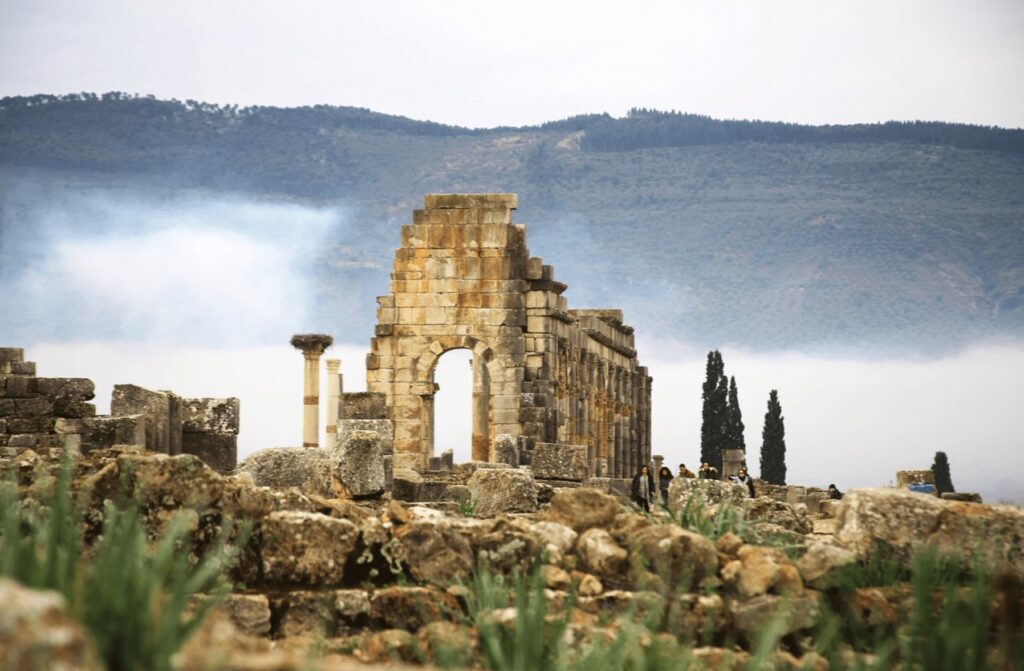
Highlights of Volubilis
Basilica
The basilica was a grand structure used for the administration of justice and the governance of the city. It was completed in the 3rd century AD during the reign of emperor Macrinus.
Measuring more than 40 metres in length, it is one of the finest examples of a Roman basilica found anywhere in Africa.
Once upon a time, the interior of the Volubilis basilica would have been a magnificent sight. Two rows of towering columns framed the apses at each end. Here, the city’s magistrates would have presided over legal proceedings and civic affairs.
Capitoline Temple
Just behind the basilica stood another great public monument, the Capitoline Temple. This was dedicated to the three chief deities of the Roman state – Jupiter, Juno and Minerva.
With its Corinthian columns and single cella, this temple would have been a focal point of civic life. Important assemblies and ceremonies were held in its forecourt.
Partially restored over the centuries, the Capitoline Temple and its surrounding precinct remain among the impressive monuments at Volubilis today.
Triumphal Arch
Situated at the end of the city’s main thoroughfare, the Arch of Caracalla is one of the most distinctive landmarks at Volubilis. While it may not be the most architecturally sophisticated structure, the sheer scale and grandeur of this triumphal arch impresses. In my opinion, it contrasts strikingly against the smaller Tingis Gate at the opposite end of the Decumanus road.
The Arch of Caracalla was commissioned in the year 217 AD by the city’s governor, Marcus Aurelius Sebastenus. It was built to honour the Roman emperor Caracalla and his mother, Julia Domna.
Houses and palaces
Volubilis was once home to many residential dwellings, showcasing the stark economic and social disparities that existed within its walls. At one end of the spectrum, it boasted a number of opulently decorated mansions that belonged to its wealthiest inhabitants. In many of these buildings, well-preserved mosaics adorn the floors, walls and ceilings.
In stark contrast, the poorer segments of Volubilis’ population resided in much humbler abodes. These simple, two-room structures were constructed of mud-brick.
Many of the residential dwellings are now named after their most striking mosaics or significant archaeological finds uncovered within.
House of Orpheus
Located in the southern part of Volubilis, this residence derives its name from the Orpheus mosaic that adorns its interior. It depicts the legendary musician and poet playing his harp to an audience of trees, animals and birds. S
Several other impressive mosaics can be found, including one of the sea goddess Amphitrite in a seahorse-pulled chariot.
House of the Athlete
Situated near the forum, the House of the Athlete is named after its mosaic. It depicts an athlete or acrobat riding a donkey, facing backward while holding a cup outstretched in his hand. This whimsical image may represent the figure of Silenus, a companion of Dionysus, known for his love of wine and revelry.
The placement of this mosaic within the House of the Athlete suggests it was likely a source of amusement for the home’s wealthy residents and their guests.
House of the Ephebe
Named after a bronze statue that was uncovered within, the House of the Ephebe features several mosaic-adorned rooms. One depicts Dionyus in a chariot being drawn by leopards. The house is structured around a peristyle and includes spaces for storing olive oil.
House of the Knight
Adorning the walls of this residence is a mosaic depicting Dionysus, coming upon the sleeping figure of Ariadne. This mythological scene is particularly poignant, as Ariadne was later said to have borne Dionysus six children, symbolising the fruitful union between the divine and mortal realms.
But the house’s most renowned feature is the bronze statue of a mounted rider. It was discovered in 1918 and is now displayed in the Museum of History and Civilisations in Rabat.
House of the Labours of Hercules
With more than 40 rooms, this sprawling villa is named for the stunning mosaic that adorns its floors. It depictg the legendary twelve trials and tribulations of Hercules.
It is thought to have been commissioned during the reign of the emperor Commodus, who famously saw himself as a reincarnation of the mythical hero. Beyond the Herculean mosaic, there is another showcasing the powerful god Jupiter alongside his divine lover Ganymede. Additionally, there are representations of the four seasons.
Gordian Palace
Constructed during the reign of emperor Gordian III in the mid-3rd century AD, this was likely the official residence of the provincial governor, rather than the emperor himself. It combined two separate houses and boasted 74 rooms arranged around several courtyards, with private bathhouses catering to both domestic and administrative functions.
The front of the structure featured a colonnaded facade, behind which lay a dozen individual shops. In the northeast corner stood an industrial oil factory complete with three presses and a dedicated storage facility.
Despite its grand scale and presumed high status, the Gordian Palace’s decoration was relatively plain. Only a few mosaics remain today.
House of Venus
Situated on the eastern side of Volubilis beneath a cypress tree, this artistic residence is a testament to the wealth of its former occupants. Almost every surface was once adorned with mosaics dating back to the 2nd century AD.
These tile compositions depicted animal and mythological scenes, with racing chariots pulled by fantastical teams of peacocks, geese and ducks. Its namesake mosaic, depicting the goddess Venus, has since been moved to the Kasbah Museum in Tangier.
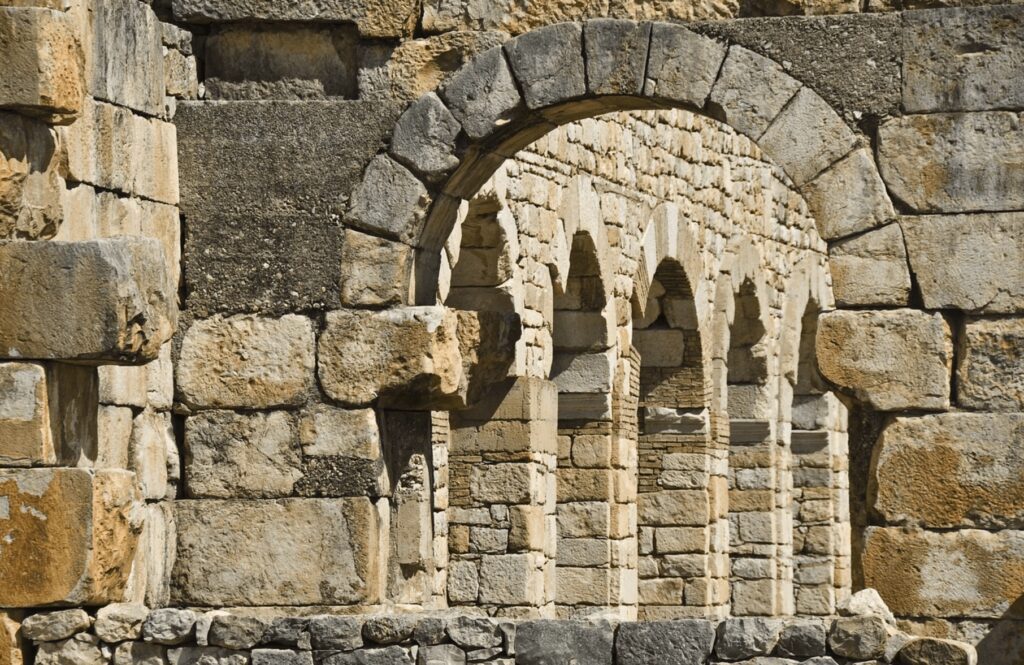
Best time to visit Volubilis
Spring is one of the best times to visit Volubilis. During this season, the wildflowers are in bloom and the surrounding hills are a lush green.
In the summer months, temperatures can soar. It’s important to come well-prepared with plenty of water and a wide-brimmed hat.
Autumn brings a milder climate, with temperatures ideal for exploring the exposed ruins. A winter visit may require you to be rugged up and occasional rainfall can be expected.
No matter what time of year you visit, try and schedule your explorations for the early morning or late afternoon when the light is at its most atmospheric.

PLAN YOUR TRIP WITH MY FAVOURITE RESOURCES:
Find hotels via Booking
Book tours and attractions via Viator or GetYourGuide
Find a rental car via Discover Cars
Book flights via Kiwi or Booking
Search for buses and trains via 12Go or Omio
Get travel insurance via SafetyWing
Buy a digital eSIM with Airalo
By purchasing through my links, you’ll be supporting my website at no additional cost to you
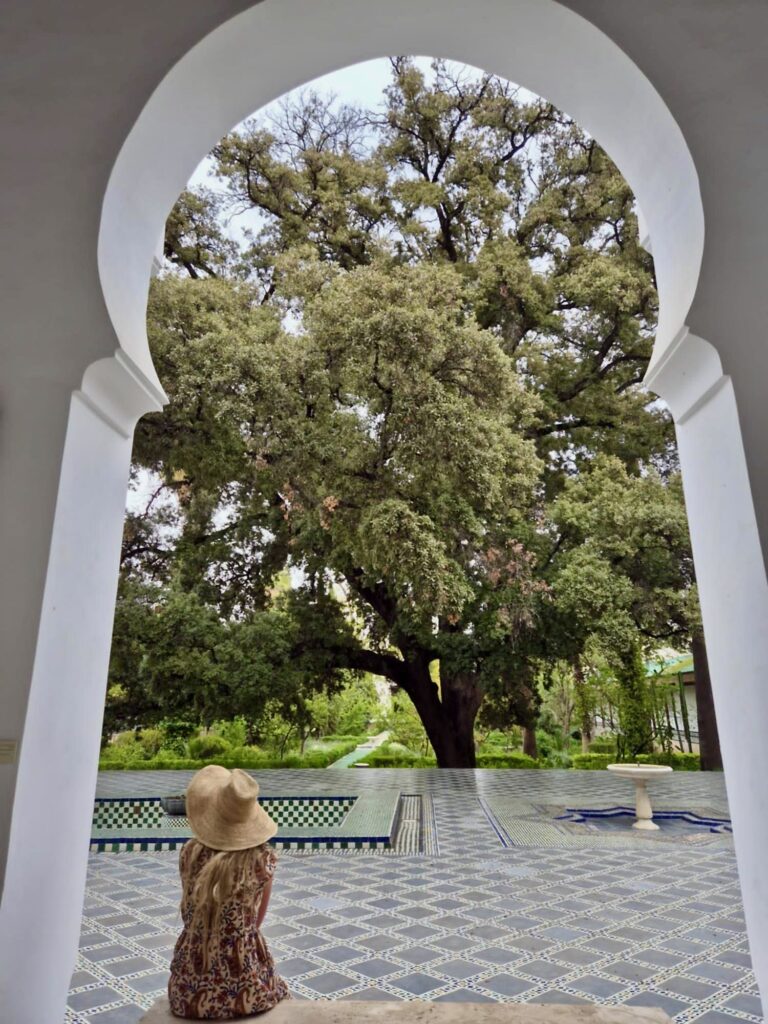
About Me
I’m Malika, a global traveller who first visited Morocco in 2014 before marrying a local and settling down in a little village on the Atlantic coast. Over the years, I’ve developed an intense love for Morocco, its incredible landscapes, storied cities and the exceptionally generous hospitality of its people.
Malika in Morocco is a place to share my years of experience exploring the country, from north to south and from the Atlantic Ocean to the Sahara Desert. As a resource for travellers visiting Morocco, I want to encourage others to experience this captivating destination the way they desire, whether that’s independently or under the expert guidance of local tour operators.
I believe strongly in supporting responsible and sustainable tourism initiatives while inspiring travel experiences that are life-impacting and mutually beneficial for both travellers and locals.
-
8 Best Luxury Hotels in Fes: Morocco’s “Cultural Capital”
Looking for the best luxury hotels in Fes? Explore this curated collection of high-end stays, including beautifully restored riads and modern retreats. Hidden gems and historic treasures await in Fes, Morocco’s cultural capital. Stays here are all about wandering through the maze-like medieval medina, uncovering artisanal wares in the souks and marvelling at the centuries-old…
-
4 Unforgettable Tours to the Sahara Desert from Fes
Looking for the best tours to the Sahara Desert from Fes? Explore this curated collection of multi-day trips, including budget-friendly small group adventures and private desert tours in Morocco. If there’s one experience that’s high on many travellers’ lists when visiting Morocco, it’s spending a night in the Sahara Desert. Having been lucky enough to…
-
5 Best Food Tours and Experiences in Fes: Home of Fassi Cusine
Looking for the best food tours in Fes or foodie-related experiences? Discover five incredible ways to experience Fassi cuisine and culture in one of Morocco’s oldest cities. Home to one of the world’s oldest cuisines, Morocco is a deservedly popular destination for foodies. It’s also a destination I’ve been lucky enough to eat my way…
-
11 Highly-Rated Riads in Fes: Morocco’s “Cultural Capital”
Looking for the best riads in Fes? Discover 11 inspiring places to stay in this ancient city, all of which abound with the charm of traditional Moroccan residences. Fes is one of Morocco’s most storied cities, with a history stretching back to the 8th century. It’s an incredible place to visit, not only for its…
-
An Imperial Gem: Essential Travel Guide to Meknes
Looking for the best things to do in Meknes or highly recommended places to stay? Discover the ideal time to visit, tips for getting around and the best tours in this essential travel guide to Meknes. Located less than an hour’s drive from Fes, Meknes is often overlooked by travellers, despite its historical significance as the…
-
A Holy Town: Essential Travel Guide to Moulay Idriss Zerhoun
Looking for the best things to do in Moulay Idriss Zerhoun or highly recommended places to stay? Discover the ideal time to visit, tips for getting around and the best tours in this essential travel guide to Moulay Idriss Zerhoun. Perched dramatically on the slopes of the Khyber and Tazga hills, Moulay Idriss Zerhoun is…
